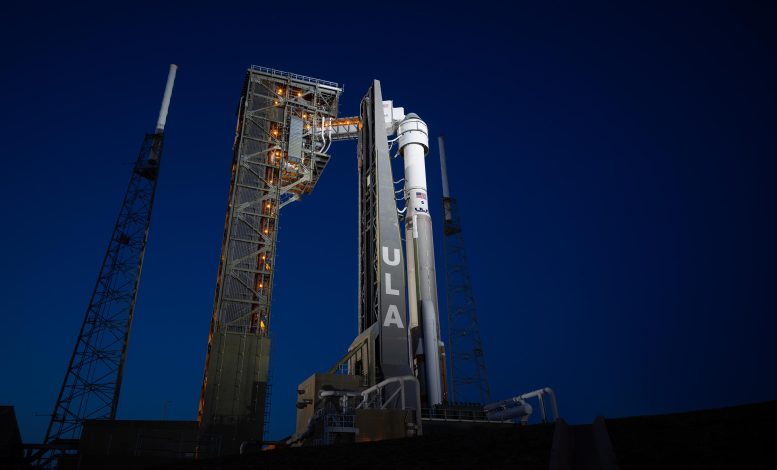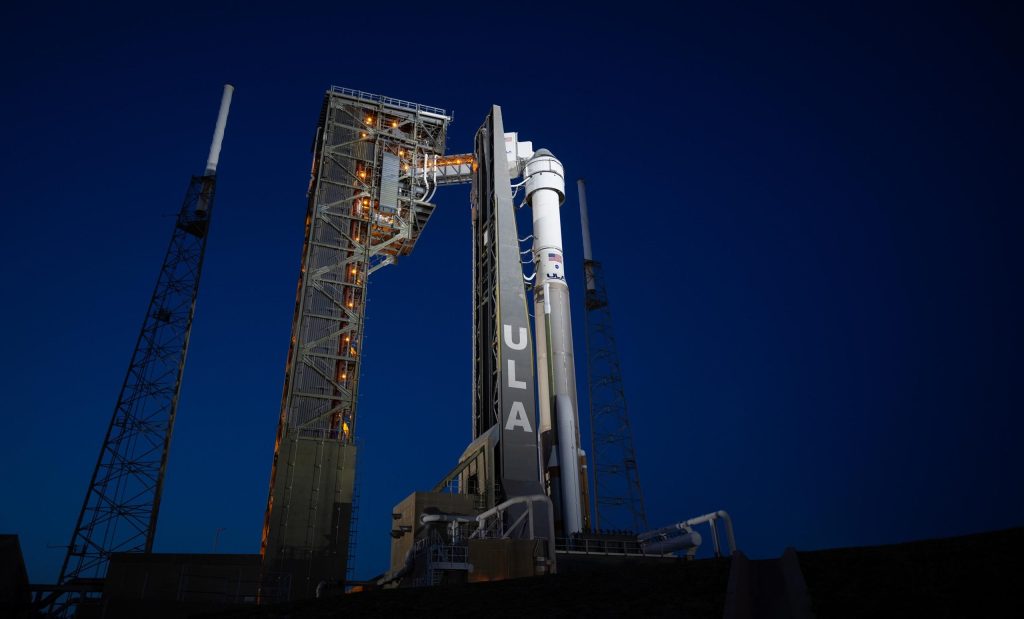
A United Launch Alliance Atlas V rocket with Boeing’s CST-100 Starliner spacecraft aboard is visible on the launch pad, lit up by spotlights at Space Launch Complex 41 at Cape Canaveral Space Force Station in Florida. The photo was taken on Test, Sunday, May 5, 2024, before NASA’s Boeing Crew Flight. Credit: NASA/Joel Kowsky
The launch of NASA’s Boeing Crew Flight Test to the International Space Station has been delayed to no earlier than May 17 due to a defective valve in the Atlas V rocket’s upper stage. The United Launch Alliance will swap the valve after encountering issues during prelaunch checks. Astronauts Butch Wilmore and Suni Williams remain in quarantine at NASA Kennedy, waiting for the next launch opportunity.
The Boeing Crew Flight Test for NASA is now scheduled to launch no earlier than 6:16 p.m. EDT on Friday, May 17, to the International Space Station. After a comprehensive data review was completed on Tuesday, ULA (United Launch Alliance) opted to replace a pressure regulation valve on the liquid oxygen tank on the Atlas V rocket’s Centaur upper stage.
ULA intends to move the rocket, with Boeing’s Starliner spacecraft, back to its Vertical Integration Facility at Cape Canaveral Space Force Station in Florida on Wednesday, May 8, to commence the replacement. The ULA team will conduct leak checks and functional checkouts to support the next launch attempt.
The erratic behavior of the valve during prelaunch operations led mission teams to call off the launch on May 6. After the ground crews and astronauts Butch Wilmore and Suni Williams safely left Space Launch Complex-41, the ULA team successfully ordered the valve closed and the oscillations were temporarily reduced. The oscillations then occurred twice during fuel removal operations. After evaluating the valve history, data signatures from the launch attempt, and assessing the risks of continued use, the ULA team determined the valve exceeded its qualification and mission managers agreed to remove and replace the valve.
NASA, Boeing, and United Launch Alliance officials discussed the details of the decision to delay the first launch attempt for NASA’s Boeing Crew Flight Test. Participating in the briefing were Ken Bowersox, associate administrator of NASA’s Space Operations Mission Directorate; Steve Stich, manager of NASA’s Commercial Crew Program; Tory Bruno, president and CEO of United Launch Alliance; Dana Weigel, manager of NASA’s International Space Station Program; and Mark Nappi, vice president and program manager at Boeing’s Commercial Crew Program. Credit: NASA/Chris Chamberland
Mission managers discussed the details leading to the decision to cancel the May 6 launch opportunity during a news conference (see video above) shortly after the cancellation at NASA’s Kennedy Space Center in Florida.
Wilmore and Williams will stay in crew quarters at NASA Kennedy in quarantine until the next launch opportunity. The pair will be the first to launch aboard Starliner to the space station as part of the agency’s Commercial Crew Program.



